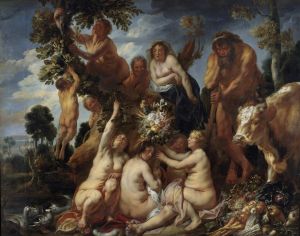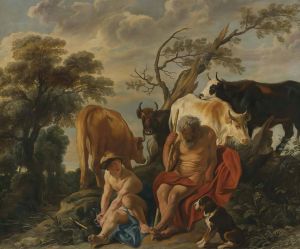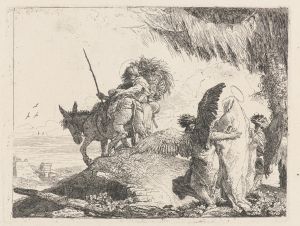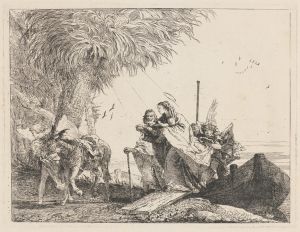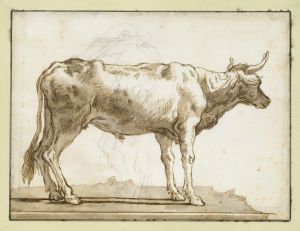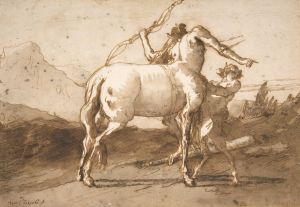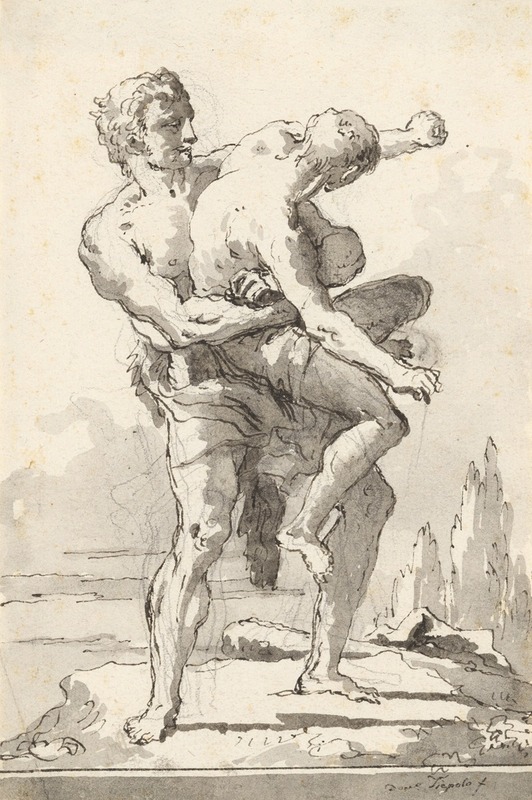
Hercules and Antaeus
A hand-painted replica of Giovanni Domenico Tiepolo’s masterpiece Hercules and Antaeus, meticulously crafted by professional artists to capture the true essence of the original. Each piece is created with museum-quality canvas and rare mineral pigments, carefully painted by experienced artists with delicate brushstrokes and rich, layered colors to perfectly recreate the texture of the original artwork. Unlike machine-printed reproductions, this hand-painted version brings the painting to life, infused with the artist’s emotions and skill in every stroke. Whether for personal collection or home decoration, it instantly elevates the artistic atmosphere of any space.
"Hercules and Antaeus" is a painting by the Italian artist Giovanni Domenico Tiepolo, who was an important figure in the Venetian school of the 18th century. Giovanni Domenico Tiepolo, often referred to simply as Domenico Tiepolo, was the son of the renowned painter Giovanni Battista Tiepolo. Domenico was born in Venice on August 30, 1727, and he worked closely with his father, assisting him on many of his major projects. However, Domenico also developed his own distinctive style and body of work.
The painting "Hercules and Antaeus" depicts a scene from classical mythology. The story of Hercules and Antaeus is a well-known myth in which Hercules, the hero of Greek mythology, encounters Antaeus, a giant and the son of Gaia (the Earth) and Poseidon (the Sea). Antaeus was invincible as long as he remained in contact with his mother, the Earth. In their struggle, Hercules realized that he could not defeat Antaeus through sheer strength alone, as Antaeus would regain his strength every time he touched the ground. Hercules ultimately lifted Antaeus off the ground, breaking his contact with the Earth, and crushed him to death.
Domenico Tiepolo's painting captures the dramatic moment of this mythological encounter. The composition is dynamic, with Hercules depicted in the act of lifting Antaeus off the ground. The figures are rendered with a sense of movement and tension, characteristic of Tiepolo's style. The use of light and shadow adds to the drama of the scene, highlighting the muscular forms of the two figures and emphasizing the physical struggle between them.
Domenico Tiepolo's work is known for its vibrant colors and lively compositions, and "Hercules and Antaeus" is no exception. The painting reflects the influence of his father's grand manner of painting, but also showcases Domenico's own artistic sensibilities. The attention to detail and the expressive poses of the figures demonstrate his skill as a painter.
The painting is part of a larger body of work by Domenico Tiepolo that includes both religious and mythological subjects. Throughout his career, Domenico produced a significant number of paintings, drawings, and prints. He was also known for his series of frescoes and his contributions to the decoration of various churches and palaces.
"Hercules and Antaeus" is an example of Domenico Tiepolo's ability to bring classical myths to life through his art. The painting not only illustrates a famous mythological story but also showcases the artist's technical prowess and his ability to convey emotion and movement through his work.
Today, Giovanni Domenico Tiepolo's paintings are held in various collections around the world, and his work continues to be studied and appreciated for its contribution to the art of the 18th century. "Hercules and Antaeus" remains a testament to his talent and his place in the history of art.






